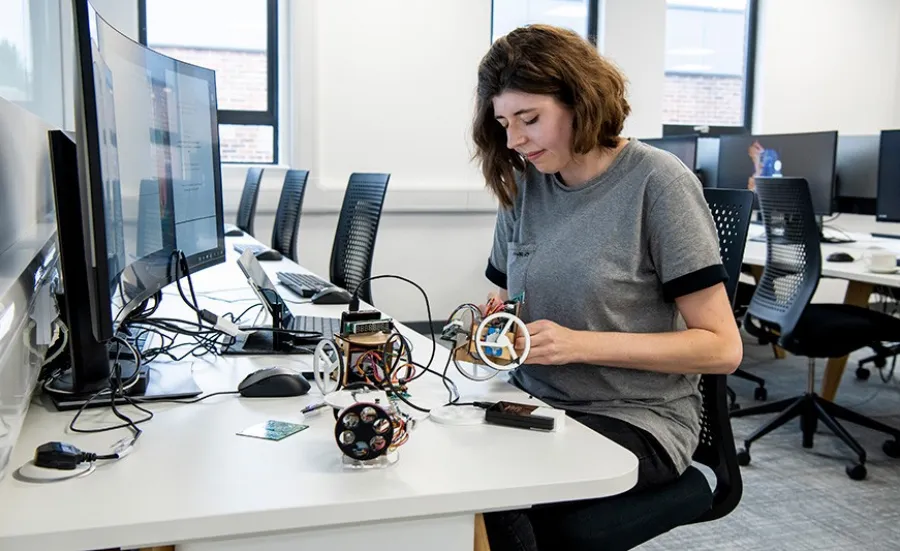Current research degree projects

Explore our current postgraduate research degree and PhD opportunities.

Explore our current postgraduate research degree and PhD opportunities.

To develop reliable satellites “quickly and affordably”, small satellite missions accept higher risk, learning from failures across generations with risk assessment relying on individual team experience. This makes it almost impossible to achieve a general risk framework for this class of satellite. This research will apply Artificial Intelligence to analyse past small satellite missions to develop a global risk assessment framework.
Nonlinear parametric photonics creates an interface between light and the atoms/ions and detectors used in quantum systems. This project combines novel fabrication approaches for nonlinear waveguides with established commercial materials to expand their operation into the ultra-violet and mid-infrared wavelength regions for use in practical quantum systems.
In the world of Quantum Technology every photon is precious. This project will create new ultra-low-loss optical components that will lead to advanced quantum memories, switchable delays, and the creation of large, entangled quantum states.
This PhD explores quantum dots and perovskite nanocrystals to create nanoscale optoelectronic devices that mimic functionalities of the biological eye. You will design and integrate quantum-enhanced photonic systems for energy-efficient, high-speed neuromorphic computing and sensing, advancing sustainable and intelligent quantum technologies.
Quantum sources that produce entangled photon pairs are crucial components in many quantum applications. This project will develop fibre-based entangled photon sources based on poled silica fibre technology where entangled photon pairs are directly generated in an optical fibre thereby enabling the construction of low-cost, versatile sources for quantum applications.
You'll explore how principles of quantum information flow and probabilistic entanglement can enhance coordination, adaptability, and resilience in multi-robot systems. The project bridges quantum technologies and embodied swarm intelligence, aiming to create a new class of collective robotic systems that think and act beyond classical limits.
Novel Micro/Nano-Electro-Mechanical Systems (MEMS/NEMS) switches will be developed to significantly reduce overall power consumption of integrated quantum circuits. The MEMS/NEMS switches will be optimised for low temperature operation and will be integrated with existing quantum circuits to evaluate the energy efficiency of the systems.
This project explores how quantum computing can transform energy system planning for a net-zero Europe. By integrating quantum and classical optimisation methods, it will address uncertainty in renewable generation and develop scalable algorithms for large-scale stochastic models, advancing both optimisation theory and practical tools for the energy transition.
Symmetry is a powerful tool for selection of NMR interaction and creation of correlated spin states. Many exquisite experiments are based on analytical calculation via average Hamiltonian or Floquet theory. A step change in efficiency and robustness may be obtained by combining Hamiltonian symmetry, periodicity and quantum optimal control.
How about building programmable acoustic highways on a chip! Using origami-inspired phononic lattices, we will switch topological edge paths to route phonons between quantum devices with low loss and high isolation. The project includes multi-scale computational modelling and MEMS fabrication, leading to scalable quantum sensing, multiplexed readout, and adaptive routing.